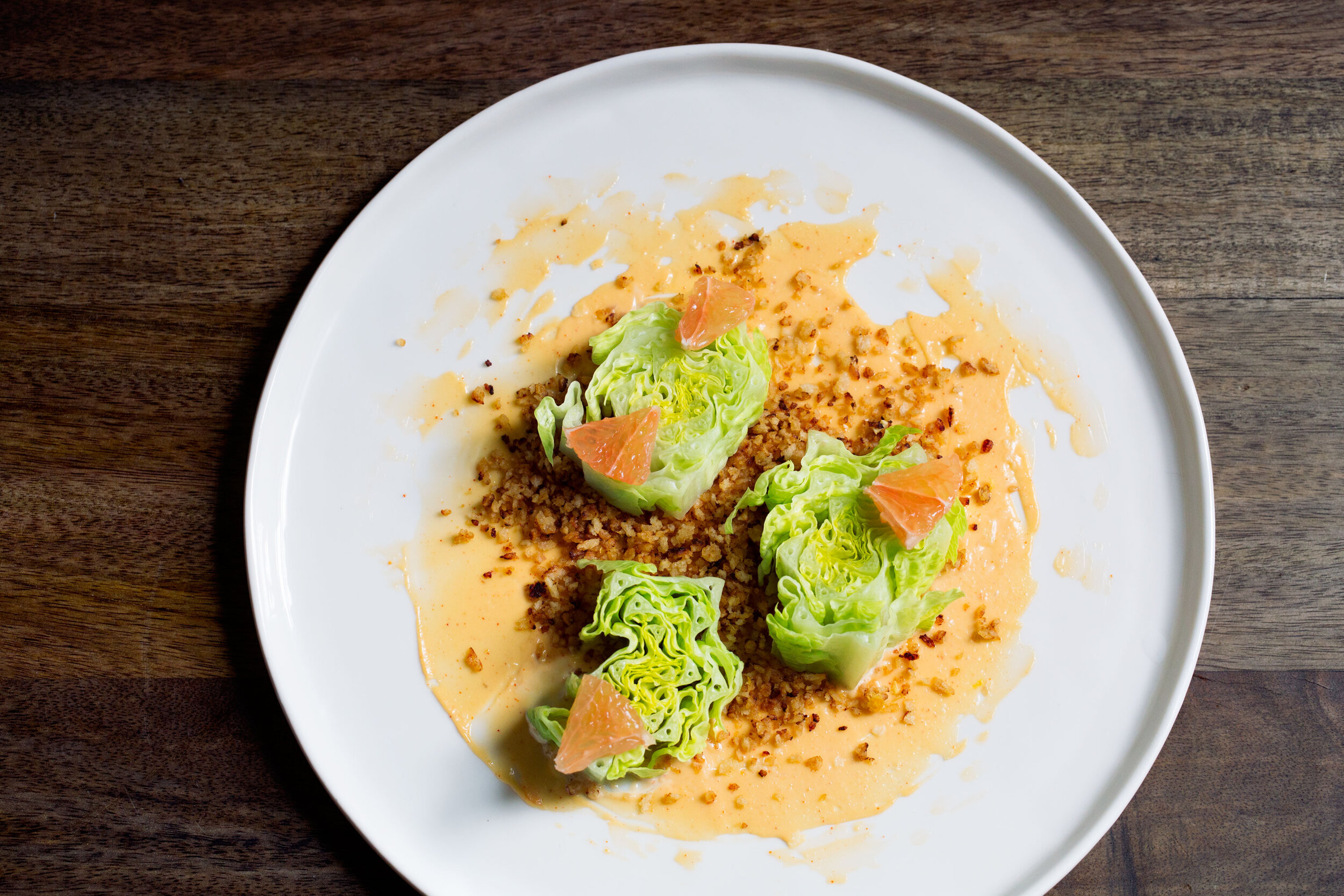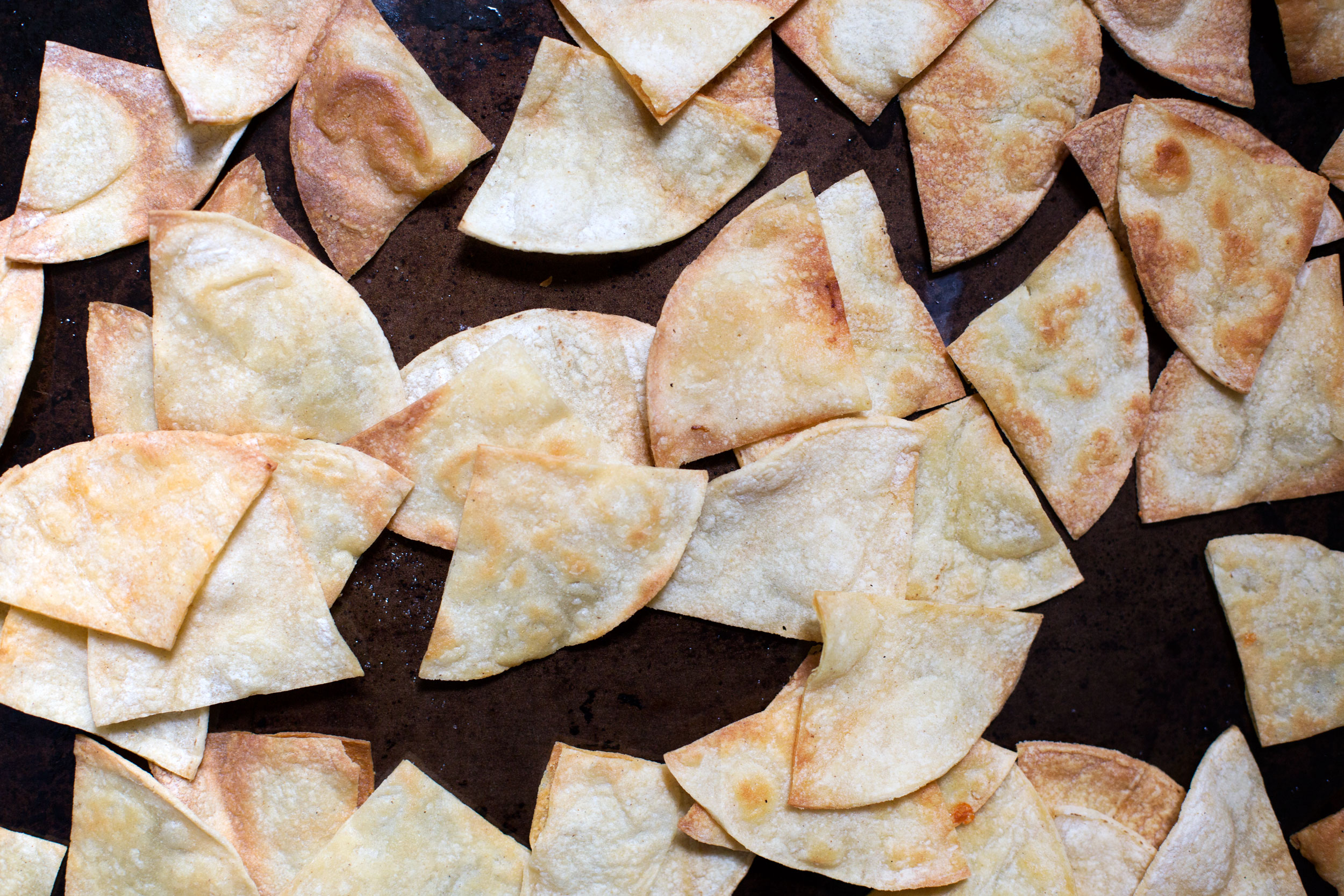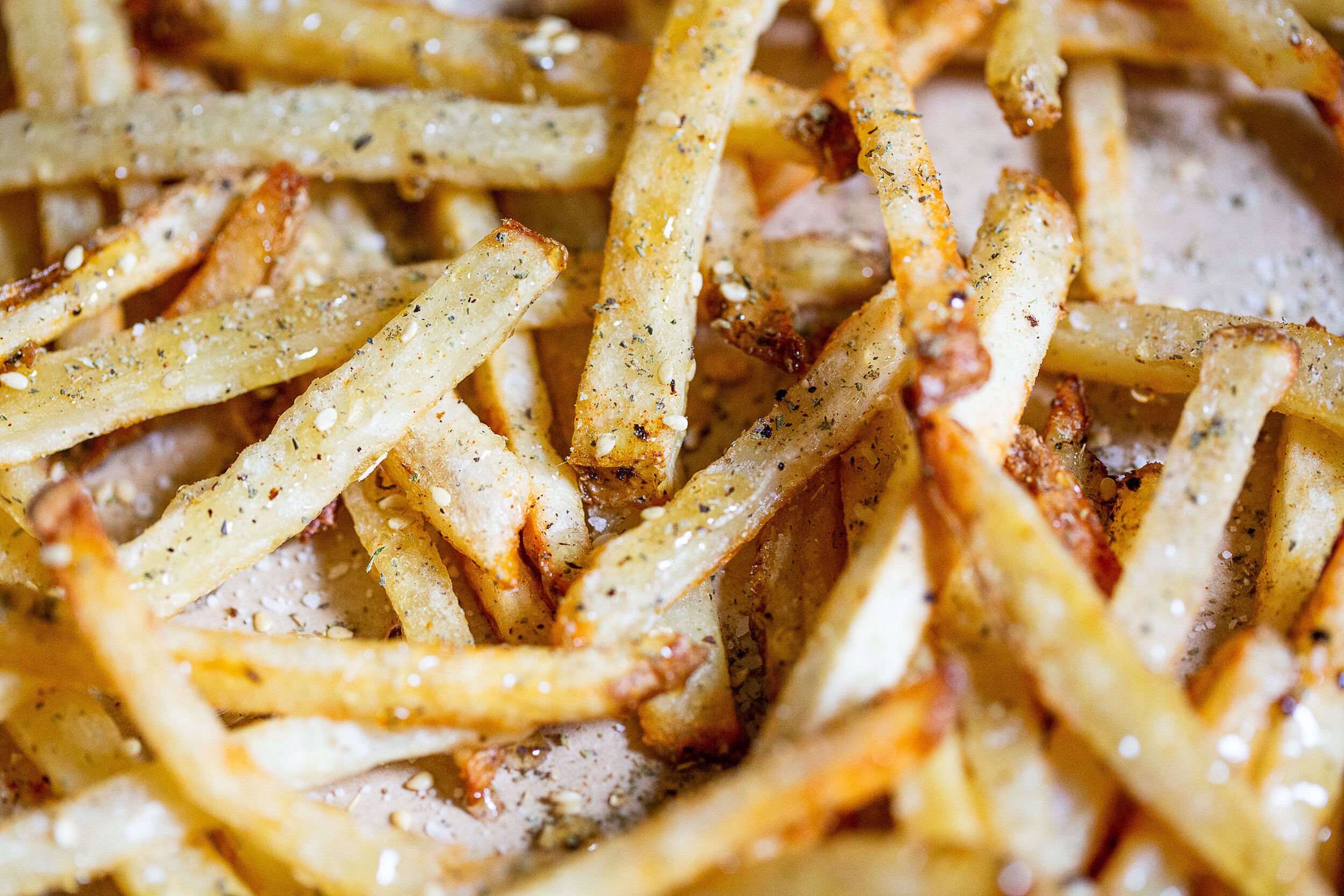End of Summer Nachos
18 small corn tortillas (or 1 large bag of corn tortilla chips if you aren't making chips - I like Xochitl brand)
1 lb. boneless skinless chicken breast, or 2/3 large portobello mushrooms for vegetarian/vegan
1 block sharp yellow cheddar cheese (for vegan, replace with Daiya or Siete Foods)
1 block pepper jack cheese (for vegan, see above)
2 fresh corn cobs (ideally when in season)
2 jalapeños (or 1 jalapeño if you aren't making pico de gallo or pickled onions)
2 medium heirloom tomatoes to make your own pico de gallo (or 1 container pre-made pico de gallo)
6 limes (or 4 limes if you aren't making pico de gallo and chips)
1 bunch fresh cilantro
1 poblano pepper
1 long red pepper
1 ripe avocado
1 medium red onion (2 if you are making pickled onions)
8 oz. container Sour Cream (for vegan, use Kite Hill spread)
1 can black beans (I prefer Brad's Organic but any will do)
Extra Virgin Olive Oil
Sea Salt
Cayenne powder
Garlic powder
Smoked Paprika
Adobo Seasoning
Chili Powder
OPTIONAL: Cotija or queso fresco for shaving on finished nachos, red radishes, and any other nacho toppings you love
** If you are feeling ambitious, make the home-made versions of the chips, crema, pickled onions and heirloom pico de gallo in advance. Recipes for all four are at the bottom of the page, and should be prepared in advance of the following steps. If you are short on time, buy them pre-made and start here:
First thing to do is make the poblano salsa. If you are grilling, you can put your poblano on the grill and allow the pepper to blister evenly all over. If not, use your oven and put it on a high broil setting. Place the clean poblano pepper on a baking sheet on the top shelf. You will need to monitor the pepper, leaving it up to 8 minutes or until it starts to blister and the skin starts to char. Then turn to the other side, and again watch for blistering, 5-8 minutes. Once the pepper is blistered evenly on all sides, remove from the oven.
Do not touch the pepper as there will be very hot steam underneath the blistered skin, so remove carefully. Set aside and let cool to room temperature. Once cool to the touch, cut off the top, cut down one side lengthwise and remove the seeds inside. Place the entire pepper into the bowl of your food processor. Then add juice of 1 whole lime, 1 avocado, ¼ tsp salt, ½ jalapeno, and 3 tbsps olive oil and run the food processor until all ingredients are broken down and the consistency is creamy. Adjust salt to taste. Put in a small jar with a tight top and put in the fridge.
Next shred roughly 1 cup of cheddar and 1 cup of pepper jack cheese and combine in one bowl. Stick in the fridge to use later. If you like your nachos extra cheesy, you should shred extra. To make these nachos vegan, you can add your favorite melty vegan cheese alternative (I personally prefer Daiya, but Whole Foods carries other alternatives like Chao, or "queso" sauce alternatives like Heidi Ho and Siete Foods). Dollop Kite Hill's vegan chive spread on top when serving.
Next let's grill our chicken and corn. Remove husks from corn and rinse. In a small dish, pour out a little olive oil and using a pastry brush, brush olive oil all over the corn. If you don't have a pastry brush, you can use your hands. Squeeze juice of 1/2 a lime over the corn and sprinkle with sea salt. Put on the grill, turning until slightly charred on all sides. Then set aside. If you do not have access to a grill, use my favorite Lodge Cast Iron grill.
Marinate your chicken breasts in a large bowl with 2 tbsps EVOO, juice of ½ lime, ⅛ tsp cayenne, ¼ tsp garlic powder, ¼ tsp smoked paprika, ½ tsp adobo seasoning, ¾ tsp chili powder, and ½ tsp sea salt. Mix until breasts are covered equally all over with the spice mix. Let marinade for 30 minutes if you have the time, or throw right on the grill, cooking approximately 8 minutes on the first side, then flipping and allowing the chicken to cook another 8 minutes, or until chicken is completely cooked through and no longer pink inside. If you have a meat thermometer, chicken should have an internal temperature of 165 degrees fahrenheit. Once chicken is done, set aside to rest.
Want to make this dish vegetarian? Try marinating and grilling portobello mushrooms the same way, letting them marinate a bit longer to soak up all the flavor.
Next add a can of black beans to a pan along with some of the juice from the can so that the beans stay moist. Add sea salt to taste, a sprinkle of garlic powder and juice of half a lime. Let the beans cook on medium-low heat, using the back side of a large spoon to crush the beans a little bit. Once the flavors have all combined, about 8-10 minutes, turn the heat off and set aside.
Let's cut our corn off the cob. Stand one of your grilled cobs upright in a bowl and carefully use a sharp knife to cut down the cob lengthwise, shaving the kernels off. Do this to both cobs and set aside.
Now it's time to put everything together!
Before you start building the nachos, preheat your oven to 350 degrees.
If you made the homemade chips in advance (recipe below), grab those now. If you opted for store bought, no worries. Lay your chips out in a single layer in a medium pyrex dish (2.2 qt or 3 qt will do). You can also use a baking dish but preferably something with sides so you can get layers going.
Evenly sprinkle some of your mix of shredded cheeses, then some of the grilled corn and cooked down beans. Then you'll lay down a second layer of chips, and do the same. Finally, add a third layer of chips, cheese, beans, and corn as well as your grilled chicken (or portobellos for vegetarian). Add a little more cheese on top of everything.
Stick in the oven at 350 for 15-20 minutes. Nachos should be crispy and golden brown on top.
Once done, carefully pull out of the oven and get to topping!
Drizzle citrus crema (recipe below), or top with sour cream for a shortcut. Sprinkle with pickled onions and peppers (recipe below). Finally, finish with a nice big scoop of pico de gallo (recipe below) and that incredible avocado poblano salsa. Add some more fresh cilantro, and sliced radish if you like it. Serve with all the extra toppings on the side so people can dip as they please, and most of all, enjoy every last crunchy bite!

















